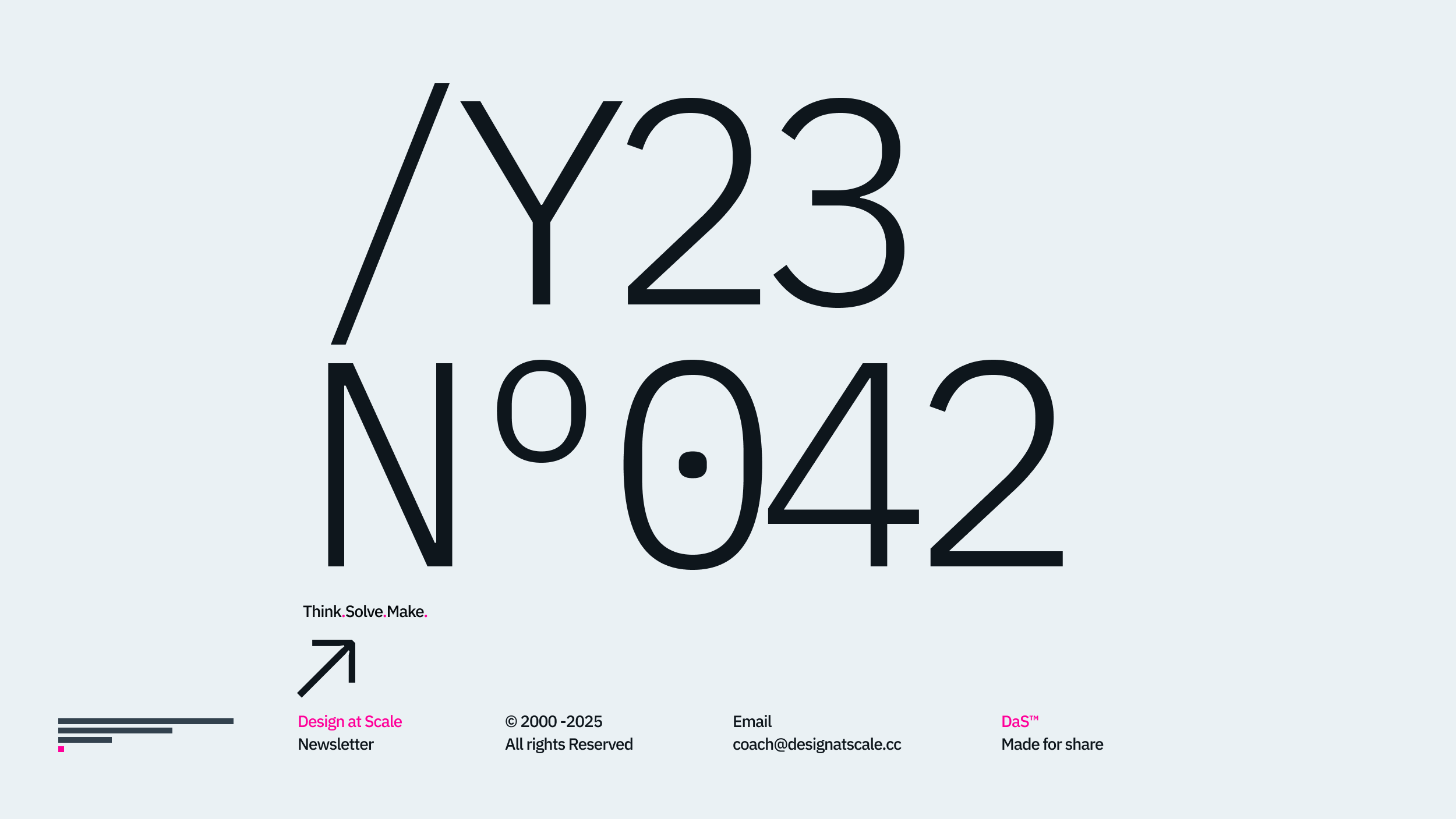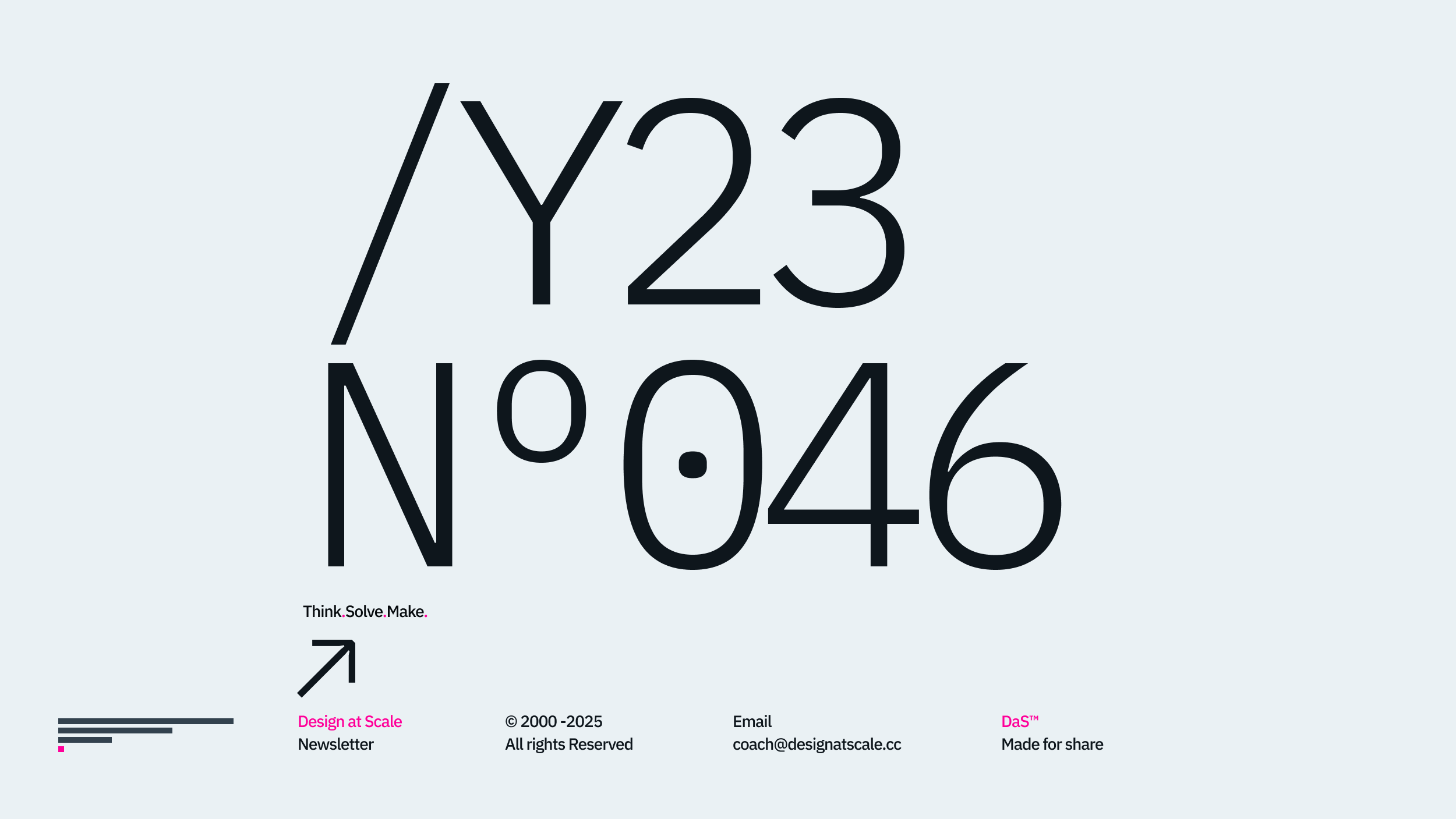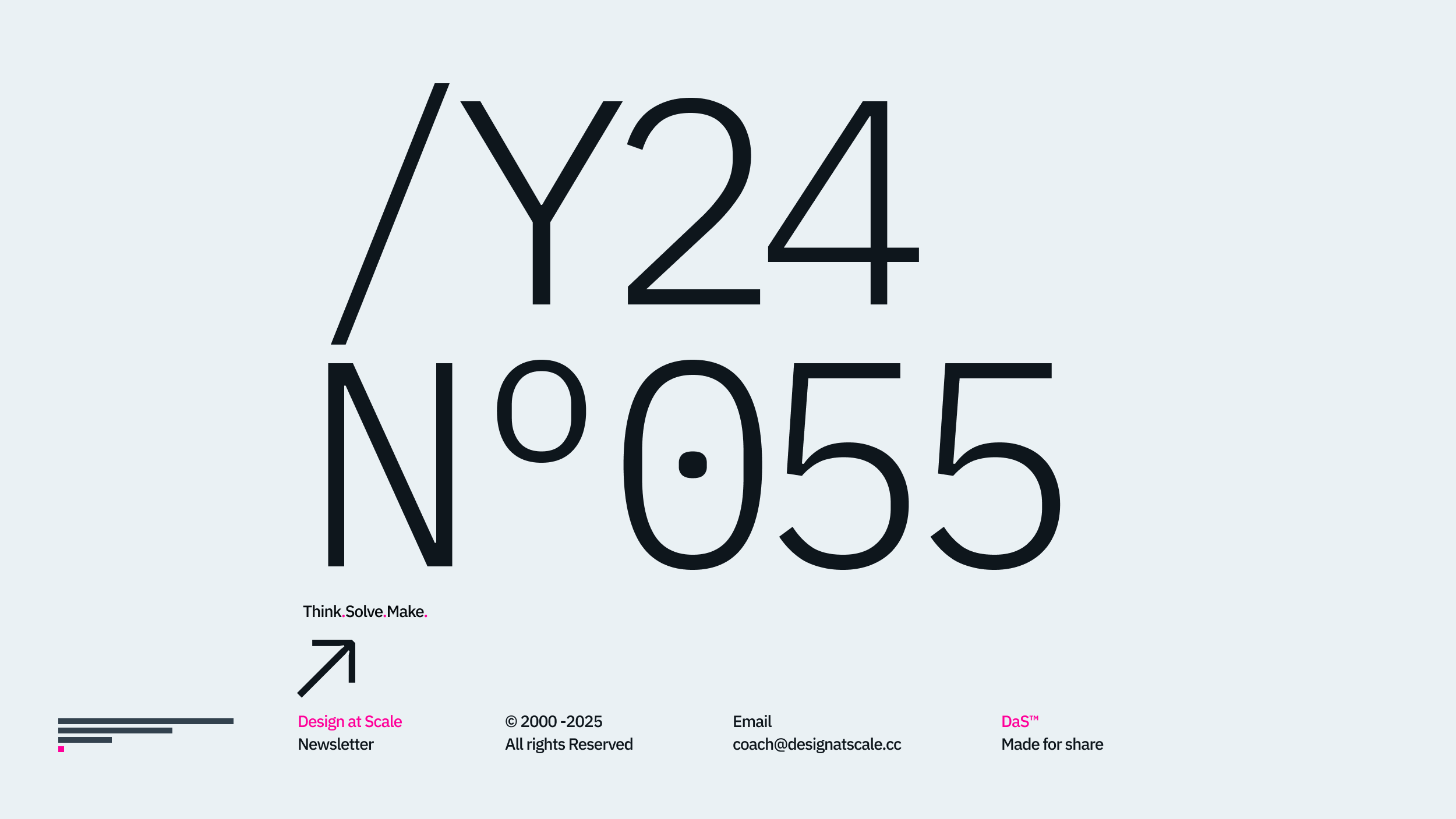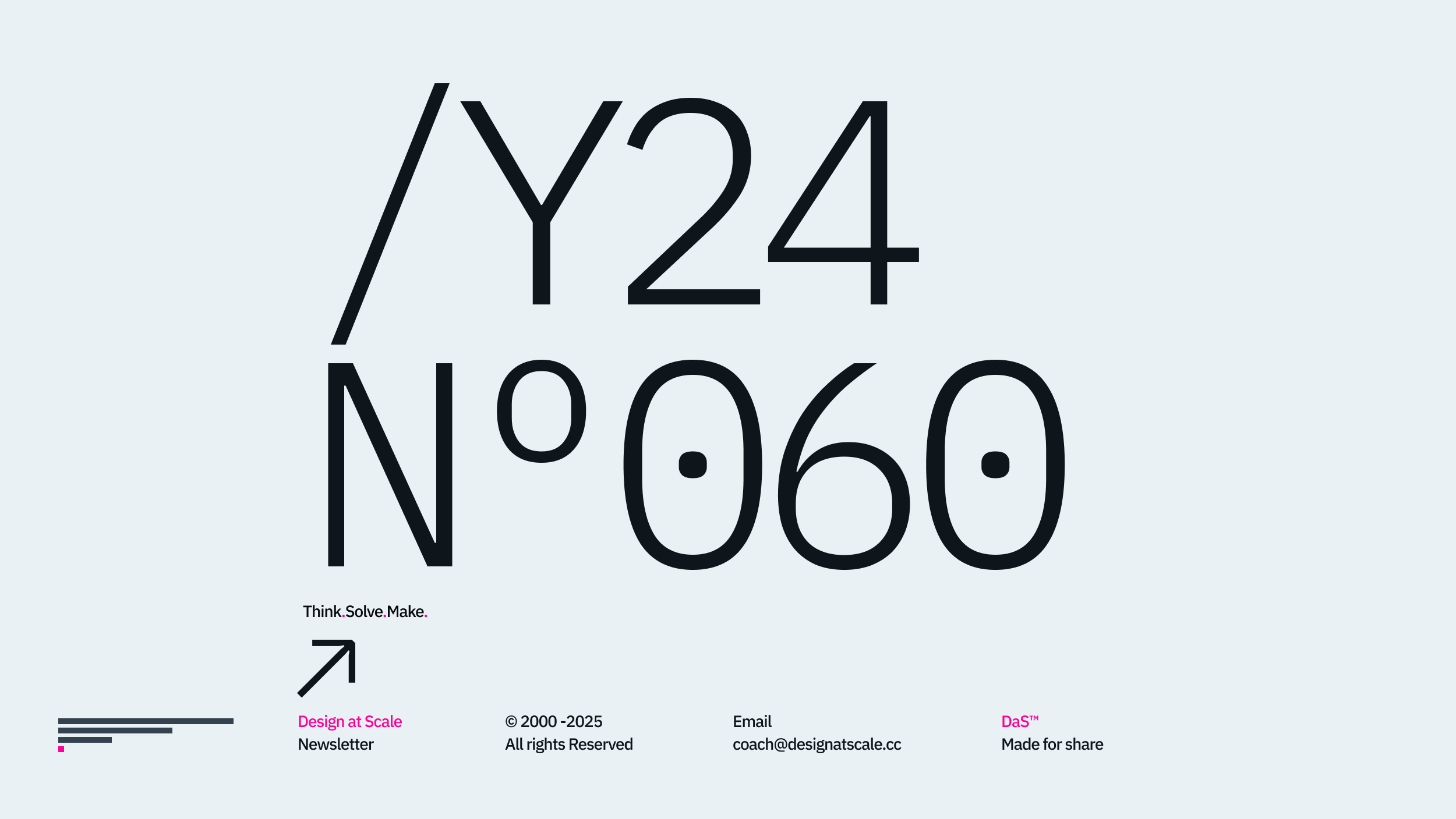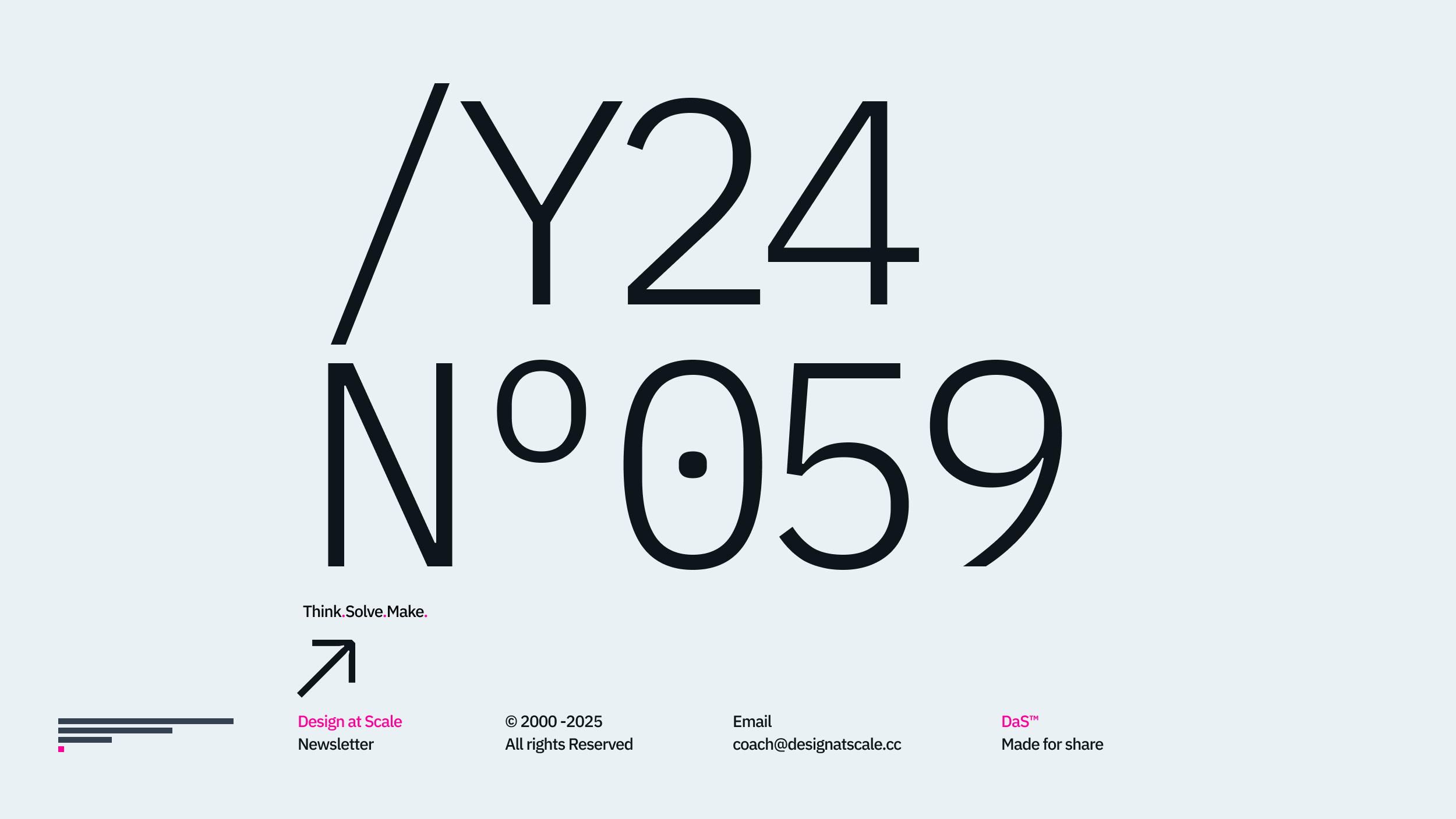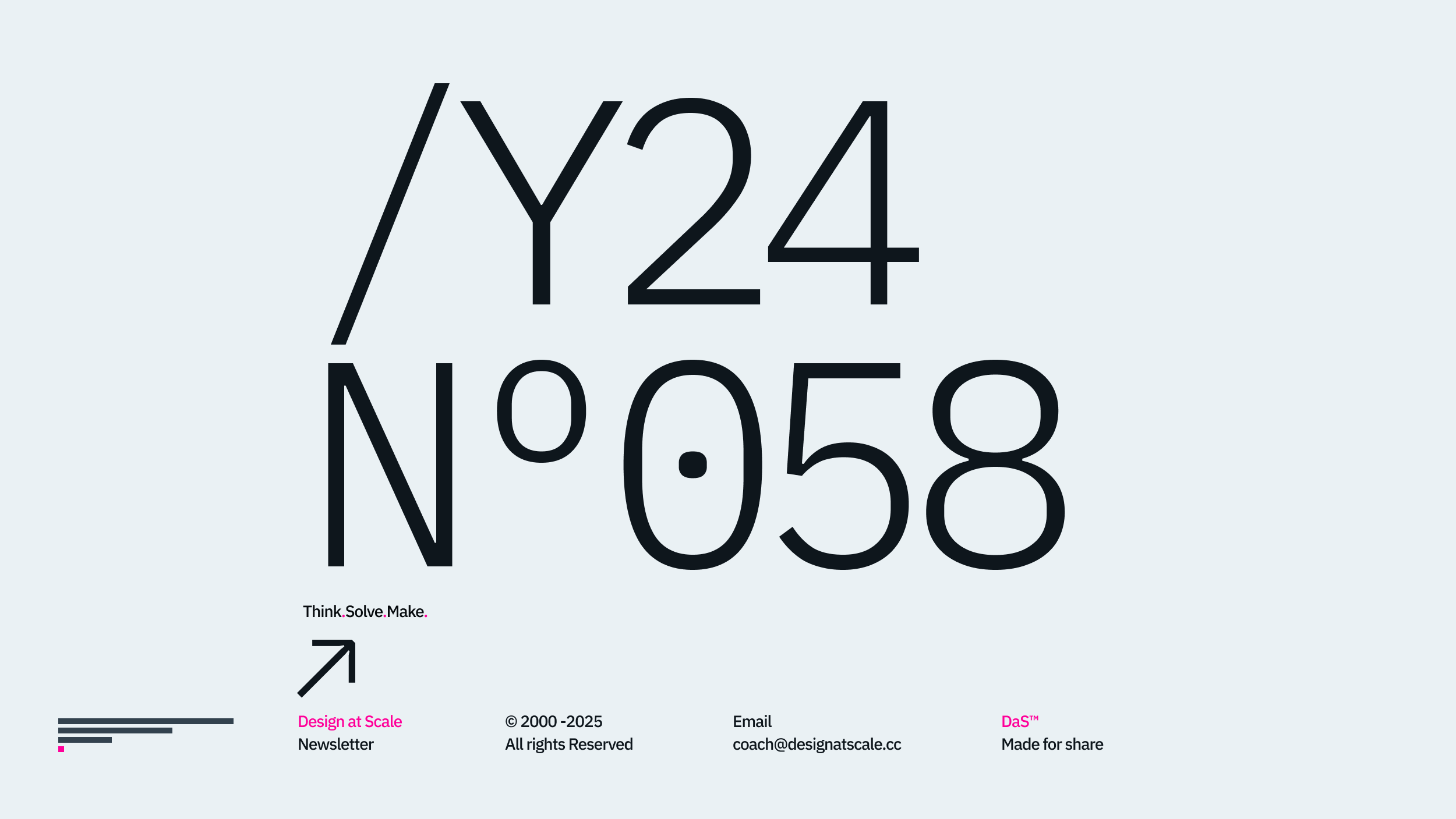Welcome back to our Design at Scale – Academy series, focusing on the design practice in a team of one hundred. This article explores how design functions integrate within a business structure from three distinct perspectives: visible organisational charts, hidden networks, and your ability to navigate between them. It addresses how designers can leverage such a structure to their advantage and explore how they can grow their careers.
Every designer works within a specific structure, regardless of team size. In a solo team, the structure is clear. Teams of ten typically focus on delivering a single proposition. However, teams of one hundred often function as a "team of teams," collaborating to produce complex (or comprehensive) propositions that come together to form a larger product. The business structure ensures that these siloed designs integrate seamlessly, maintaining consistency and coherence across the entire product or service.

Org Charts
Most companies invest resources in identifying and optimising workflows for teams to achieve efficiency and business impact. Organisational charts typically have three levels: C-level leadership, middle management (which can vary in structure), and the delivery layer. These levels are often called Gatekeepers, Decision-Makers, Influencers, and Doers.
As a junior designer, your primary focus should be on decision-makers who can influence the success of your work. Prioritise clear deadlines, deliverables, and objectives to avoid redundancy and wasted effort.
Middle design managers should identify gatekeepers who can help steer your team in the right direction and avoid misunderstandings. Maintaining a clear audit trail of tasks and deadlines is crucial, even in the most well-organized companies.
When joining a company's design department, understanding the business structure is crucial. Identify where design plays a vital role, whether it's by setting direction, supporting existing functions, or maintaining ongoing product development. Confirming your new team's function and clarifying what deliverables align with your capabilities is wise.
While organisational charts can be a starting point, my experience suggests they're often outdated and only provide a skeletal view of the organisation, let alone individual departments. Understanding a department's proper role and how success is measured becomes an entirely different story.

Hidden Networks
Beyond the organisational chart, there's another network to uncover: hidden networks with unspoken agendas. These networks can cost businesses money and effort, which can be avoided through active listening. A prime example is the departmental rivalry between brand, marketing, design systems, and product design teams. Even with clear distinctions in deliverables and design functions, disputes can arise. These disputes can focus on areas like brand placement, iconography location and usage, and who defines brand use within the product. While some may see these as minor issues, unexpected situations can occur. For example, decisions about brand placement might be made by individuals outside of core design teams, potentially leading to situations where the product dictates brand evolution rather than customer testing.
Be mindful of these nuances. You could easily create enemies by inadvertently creating conflict within your team or misusing or jeopardising someone's work through incorrect brand implementation.
Find out more on DaS™ – Academy courses.

Organisms
An organism's instinct is to protect itself to survive. This translates into some people clinging to their roles excessively. After all, they need a job to support their families and protect their future. However, another powerful force can cloud judgment beyond basic survival: the desire for power. This pride in power can blind individuals, teams, and entire organisations, leading to poor decisions. A single toxic person, whom we call a "Chimera" in our sessions, can quickly destroy the work of a talented team. They may manipulate you by convincing you they need your skills, then drag you and your ambitions through a demeaning process. We'll explore this further in the next DaS™ article.

Internal Competition
It's unavoidable that teams will sometimes work in silos, competing with each other rather than focusing on user experience. We've all seen it happen: marketing clashes with branding, the design system struggles to align with production, etc. Most teams don't realise that this competition only creates more work for them in the long run, and ultimately, no one outside the immediate teams cares about internal structures. In my 25 years of experience, I've never encountered a single organisation that celebrated the complexity of its internal branding and design system architecture.
Competition between teams is a natural human tendency, and studies by Harvard Business Review suggest that 30% of teams unintentionally compete with each other. Let's move away from design competition and instead focus on feature collaboration.
The current hierarchical structures weren't designed with large-scale design teams in mind, which creates silos and hinders communication. Teams often have no idea what other teams are working on. In one instance, we discovered that 15 teams across the business were unknowingly working on the same feature! This resulted in wasted resources. Our calculations show that with 15 teams with 3-5 people each, we spent 60 people * £400 per day = £24,000 per day on redundant efforts. Some teams even worked on this feature for over six months! By consolidating these efforts into a single feature team, we saved a staggering £2.5 million in the first month.

Why are you here
This brings us to the final question: how can you navigate effectively within this environment to support your career growth? This includes understanding how the structure supports your development, preventing conflicts, maintaining a positive reputation, and expanding your influence within and beyond your immediate team.
If your design team has over 150 members, refer to our articles on building relationships within a team of ten. Navigating such a large team can be challenging unless you're a design middle manager or responsible for team integration.
However, if you're working in a team of 30-100 designers, I highly recommend creating a map using the "Hidden Network" concept we discussed previously. It will help you revisit your purpose, identify what truly matters, and navigate the structure effectively to achieve your career goals.

One more thing
The business structure can be a valuable tool to map your career path within the organisation. To grow in a specific direction, it's crucial to understand who can support your development. Building solid alliances across different levels – up and down the organisational chart – is essential. While mastering software like Figma is necessary, remember that true success hinges on human connections. Your organisational chart represents potential career paths and where you could be in the next 3-5 years.

One last tip: don't rush the process. There are many experienced people around you. By actively listening and supporting the organisation's mission, you'll be on a path to career success and personal development, likely sooner than expected. For more details, revisit our series on "Design and the Team of One" and "Designing in a Team of Ten."
Happy scaling through design!
Hey, I’m Jiri Mocicka.
London-based Design Director, Trusted Advisor and Author of Design at Scale™. The method that empowers individuals to shape the future organisation through design.
If you have a question, join our Community and reach out to like-minded individuals who scale design propositions. An online Academy can help you to find your feed in teams of 01, 10, and 100, supported by Grid Magazine and Supply section, where we weekly bring more insights on how to become a design leader in your organisation.





